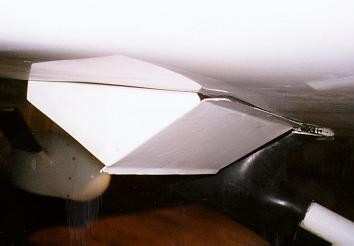Wed, Aug 02, 2006
Aero-Tips!
A good pilot is always learning -- how many times have you heard
this old standard throughout your flying career? There is no truer
statement in all of flying (well, with the possible exception of
"there are no old, bold pilots.")

Aero-News has called upon the expertise of Thomas P. Turner,
master CFI and all-around-good-guy, to bring our readers -- and us
-- daily tips to improve our skills as aviators. Some of them, you
may have heard before... but for each of us, there will also be
something we might never have considered before, or something that
didn't "stick" the way it should have the first time we memorized
it for the practical test.
Look for our daily Aero-Tips segments, coming each day to you
through the Aero-News Network.
Aero-Tips 08.02.06 (5) red
underline -- headers 5 regular
One of the most critical components to engine temperature
management, and one of the most commonly forgotten items in
high-performance engine operation, is the cowl flaps. Cowl flaps
can profoundly affect long-term health and longevity of a
high-performance airplane engine - making it even less likely to
reach the factory recommended Time Before Overhaul (TBO).

Cowl flaps are movable extensions of (usually) the lower engine
cowling that open or close to deflect the slipstream. When open,
cowl flaps deflect the slipstream and create an area of low air
pressure below the engine compartment. This draws air through the
cowling air inlets and across the cylinders, helping dissipate the
heat of combustion. It's especially important that cowl flaps
be open during high power operation at low forward airspeed-such as
takeoff and climb. In cruise closed cowl flaps create a smaller low
pressure area, but one still adequate for cooling at high indicated
air speeds.
Note: Open cowl flaps in cruise increase
airflow through the engine compartment, which also increases
"cooling drag" (increasing at the cube of the indicated airspeed).
In many models, leaving the cowl flaps open in cruise may cost five
knots or more in top-end airspeed.
Here's an easy mnemonic for remembering cowl flap use:
- C is for Checklists: Use printed
checklists -- start-up, climb, cruise, descent and after
landing.
- O is for Open cowl flaps for start-up,
taxi, run-up, takeoff, climb and for taxi-in after your clear the
runway.
- W is for Watch cylinder and oil
temperatures and close the cowl flaps as the aircraft
approaches cruise speed in level flight. But if the engine is
getting abnormally hot, or you're in a configuration where it's
likely to get hotter (taxi, takeoff or climb), open the cowl
flaps.
- L is for Leave the cowl flaps closed
for descent and landing.
Aero-tip of the day: Take care of your engine
by properly using the cowl flaps.
More News
Aero Linx: Aviators Code Initiative (ACI) Innovative tools advancing aviation safety and offering a vision of excellence for aviators. The ACI materials are for use by aviation pra>[...]
Make Sure You NEVER Miss A New Story From Aero-News Network Do you ever feel like you never see posts from a certain person or page on Facebook or Instagram? Here’s how you c>[...]
From 2016 (YouTube Edition): Who You Gonna Call When You Have a Rocket Engine that Needs a Spacecraft? While at EAA AirVenture 2016, ANN CEO and Editor-In-Chief, Jim Campbell, sat >[...]
"In my opinion, if this isn't an excessive fine, I don't know what is... The odds are good that we're gonna be seeking review in the United States Supreme Court. So we gotta muster>[...]
Expedite Used by ATC when prompt compliance is required to avoid the development of an imminent situation. Expedite climb/descent normally indicates to a pilot that the approximate>[...]
 ANN's Daily Aero-Linx (04.30.25)
ANN's Daily Aero-Linx (04.30.25) ANN FAQ: Turn On Post Notifications
ANN FAQ: Turn On Post Notifications Classic Aero-TV: Agile Aeros Jeff Greason--Disruptive Aerospace Innovations
Classic Aero-TV: Agile Aeros Jeff Greason--Disruptive Aerospace Innovations Aero-News: Quote of the Day (04.30.25)
Aero-News: Quote of the Day (04.30.25) ANN's Daily Aero-Term (04.30.25): Expedite
ANN's Daily Aero-Term (04.30.25): Expedite




